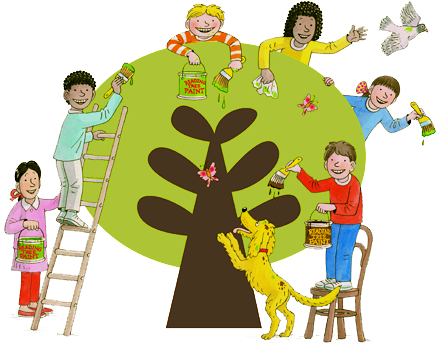 Nathalie Reverchon is the International Teacher Training Manager for Oxford Primary Education International (OXED) at Oxford University Press. She has extensive experience as an ELT teacher and trainer in the UK, Sri Lanka, Jordan, Afghanistan, and Switzerland.
Nathalie Reverchon is the International Teacher Training Manager for Oxford Primary Education International (OXED) at Oxford University Press. She has extensive experience as an ELT teacher and trainer in the UK, Sri Lanka, Jordan, Afghanistan, and Switzerland.
Q: What trends can you see happening in ELT across the various countries that you’ve taught and provided teacher training in? Are there any similarities that you’ve seen?
Well, I think one trend that I have seen is in the types of people who work in this field. I’m always amazed by how motivated and resourceful English language teachers are. Because they are often working in a very isolated context, most ELT teachers have that ‘get up and go’ attitude – the one that allows them to leave their comfortable surroundings and move to a completely different country to teach English. That takes a special type of person. And then to be able to not just make a go of it but to actually make a success of it takes somebody who has real initiative, who’s really creative, and who has a lot of energy and enthusiasm.
At the same time, some of the energetic, vibrant methods that teachers use in ELT perhaps don’t always fit some of the more sober education systems that are out there, so I think it’s equally important to be able to adapt to your surroundings. Being able to understand the context always helps. English teachers who go somewhere, learn the local language and really embrace the culture I think are in a really unique position to be able to understand both sides of the coin and bring the best of both worlds together through teaching.
Q: What similarities are there between teaching English as a first language and as a foreign language to young learners?
I think the similarities are becoming more apparent. In the past, mainstream teaching really relied on the standard textbook teaching method, and I don’t think this really worked in ELT. I think mainstream schools now are really finding the impact of investing on really good teacher training and making the learning more interactive in the classroom, something that is already apparent in a lot of ELT classrooms. In a similar way, I see some mainstream materials moving over into ELT as secondary language learners’ levels are becoming higher overall. There’s a kind of cross pollination happening which is really interesting.
Q: What advice would you give to teachers who are ELT teachers interested in using OXED primary materials like the Oxford Reading Tree?
For ELT teachers interested in using first language resources like Oxford Reading Tree (ORT) or other OXED primary materials, I would really encourage them to have confidence in their understanding of pedagogies, of methodologies, and of approaches. This might require a lot of adaptation to match the class type and size, but the principles are really effective teaching methods and will make really engaging classes.
Q: Do you think there are advantages to using the Oxford Reading Tree as a textbook over using it just as reading materials?
I think there are real advantages to using the ORT in the classroom because at a younger age, children are less able to explicitly analyze the language in the way that an adult would be able to. In fact, teachers of primary schools in the UK won’t simply use just a textbook to teach literacy. The approach that is taken as a first-language approach is based on how you learn your first language: through natural acquisition such as stories, fun and games, songs and so on. The idea of ORT is to use that child-centered methodology and build up this bank of really rich stories that appeal to children. Children are really motivated by the stories; they want to know what’s happening.
Also, one of the main appeals with ORT that I’ve seen where it’s being used in different countries around the world is the visual appeal. The ORT teams of authors, Roderick Hunt and Alex Brychta have worked together so well to create these stories which have a lot of humour in them. And that humour is reflected in the pictures. So even children who are perhaps struggling with the words themselves can engage and appreciate the story on a visual level. That can really support their comprehension as they’re starting to engage with English. I think it’s a really nice child-friendly way into English.
There’s also some really rich vocabulary which is one of the biggest differences with materials designed for ELT. Because we’re seeing it used in so many international schools as well, the ORT team are continuing to develop as many resources and materials to support teachers who are using it in a second language context and who have a mixture of language abilities in the classroom. In these types of classrooms, it’s very important to have that scaffolding that the ORT has. As we know, in ELT you can either grade your material, or you can grade your task, and what they’ve developed with the ORT teacher support materials is extension for higher level children but then also a lot more structured tasks for the lower level students.
Some of the mystery, or the feeling of being overwhelmed that surrounds the ORT comes from looking at the storybooks. But actually less-confident teachers or busy teachers will be glad to know that the teacher resources are there to support you to use it in the classroom.
Is there anything you’d like to ask Nathalie?


Hi,
I am glad to have stumbled on this article. Even though it is so old, I would like to ask Nathalie a question.